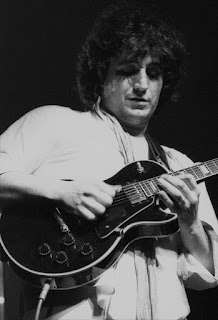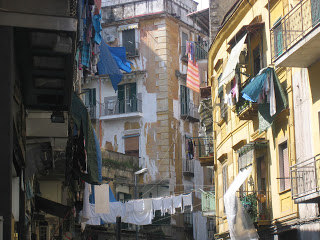First Montessori school opens in Rome
Educationalist Maria Montessori launches Casa dei Bambini
The first of what would become recognised across the world as Montessori schools opened its doors in Rome on this day in 1907. The Casa dei Bambini, in the working class neighbourhood of San Lorenzo, was launched by the physician and educationalist Maria Montessori. Montessori - the first woman in Italy to qualify as a physician - had enjoyed success with her teaching methods while working with children as a volunteer at Rome University's psychiatric clinic. She was convinced that the techniques she had used to help children with learning difficulties and more serious mental health issues could be adapted for the benefit of all children. The Casa dei Bambini came into being after Montessori had been invited to work on a housing project in San Lorenzo, where her responsibility was to oversee the care and education of the project's children while their parents were at work. Situated in Via dei Marsi, it catered for between 50 and 60 children aged between two and seven. The methods Montessori employed, which included many practical activities as well as more conventional lessons. Read more…
___________________________________________________________________
Befana - Italy’s 6 January tradition
A good witch who traditionally sweeps away problems
Children in Italy will be waking up on this day hoping to find that Befana has left them some presents while they have been sleeping. Although Christmas is almost over, the eve of 6 January is when a kind witch is supposed to visit the good children in Italy and leave them presents. Traditionally, children who have been naughty are supposed to receive only a lump of coal and those who have been stupid are supposed to receive only a carrot. But in reality, many children throughout Italy will expect good presents from Befana today. Befana is also sometimes referred to as La Vecchia (the old woman) and La Strega (the witch). But she is supposed to be a similar character to Saint Nicholas or Santa Claus. It is believed her name derives from La Festa dell’Epifania (the feast of the Epiphany). Befana is usually portrayed in illustrations as an old lady riding a broomstick, wearing a black shawl and covered in soot because she enters the children’s homes through the chimney. Another tradition is that Befana sweeps the floor of the house before she leaves, symbolising the sweeping away of the problems of the previous year. Read more…
__________________________________________________________________
Baldassare Verazzi - painter
Piedmontese artist famous for image of uprising in Milan
The painter Baldassare Verazzi, whose most famous work depicts a scene from the anti-Austrian uprising known as The Five Days of Milan, was born on this day in 1819 in Caprezzo, a tiny village in Piedmont, 120km (75 miles) from Turin in the hills above Lake Maggiore. Something of a revolutionary in that he was an active supporter of the Risorgimento, it is supposed that he was in Milan in 1848 when citizens rose up against the ruling forces of the Austrian Empire, which controlled much of northern Italy. The Cinque Giornate di Milano, in March of that year, comprised five days of street fighting that eventually resulted in the Austrian garrison being expelled from the city, marking the start of the First Italian War of Independence. Verazzi’s painting, which is today on display at the Museum of the Risorgimento in the Castello Sforza in Milan, is entitled Episodio delle Cinque Giornate (Combattimento a Palazzo Litta), and shows three figures sheltering behind a barricade while another aims a rifle over the barricade, presumably in the direction of Austrian troops. Born into a family of humble origins, Verazzi studied at the Brera Academy in Milan. Read more…
________________________________________________________________
Adriano Celentano – singer and actor
Italy’s biggest-selling recording artist of all time
The pop singer and movie actor Adriano Celentano, who is estimated to have sold in the region of 200 million records in a career spanning 60 years, was born on this day in 1938 in Milan. One of the most important and influential figures in Italian pop culture, Celentano enjoys such enduring popularity that when he gave his first live performance for 18 years at the Arena di Verona in 2012, screened on the Canale 5 television channel, it attracted an audience of more than nine million viewers. He has recorded more than 40 albums, the latest of which, Tutti le migliori (All The Best) reviving his collaboration with another veteran Italian star, Mina, was released only last year and included new material. Celentano’s biggest individual hits include Stai lontana di me (Stay away from me, 1962), Si è spento il sole (The sun has gone out, 1962), Pregherò (I will pray, 1962), Il ragazzo della via Gluck (The boy from Gluck Street, 1966), La coppia più bello del mondo (The most beautiful couple in the world, 1967), Azzurro (Blue, 1968), Sotto le lenzuola (Under the sheets, 1971), Ti avrò (I will have you, 1978) and Susanna (1984). Read more…
Home

















